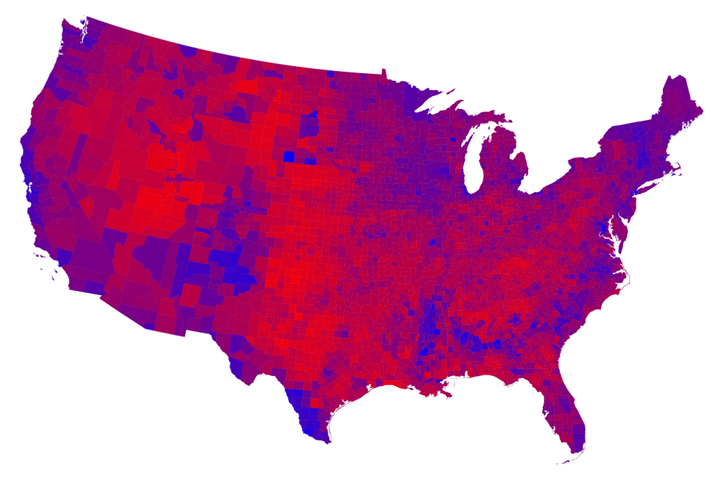Summer 2012
Are Americans segregating themselves by their political beliefs?
– The Wilson Quarterly
Experts disagree. Here's why.
Are more and more Americans clustering together in neighborhoods with people who share their lifestyle and beliefs, increasingly blind to those unlike themselves? Yes, said journalist Bill Bishop, and he put a name to the phenomenon with the title of his much discussed 2008 book The Big Sort. The trend, he argued, is helping to spread mutual incomprehension and political polarization in America.
Bishop is all wet, contend political scientists Samuel J. Abrams of Sarah Lawrence College and Morris P. Fiorina of the Hoover Institution and Stanford University. “Geographic political segregation is lower than a generation ago,” they say. (Think about it: Are Mississippi and Massachusetts more different from each other than they were in 1950, or more alike?)
Bishop’s case leans heavily on his finding that there has been a big increase in the proportion of voters living in counties where a presidential candidate has rolled up a “landslide” victory margin of 20 percentage points or more. But he chose 1976 and 2004 for his comparison; it’s not surprising that an election pitting centrists Gerald Ford and Jimmy Carter against each other produced closer votes at the county level than one in which George W. Bush squared off against John Kerry.
More important, Abrams and Fiorina argue, presidential elections don’t give a very granular view of political reality. Montana voted overwhelmingly for Bush in 2004, for example, but it also elected a Democratic governor.
A better gauge is voter registration. A look at the trends between 1976 and 2004 in the 21 states that require voters to declare a party affiliation produces a completely different portrait. When landslides are defined in these terms, the authors report, “the proportion of the American population living in landslide counties has fallen significantly, from about 50 percent to 15 percent.” Part of the explanation for the new diversity is that the large margin in registration that Democrats once enjoyed nationwide has disappeared as the number of Republicans and independents has grown.
Even if America were balkanizing in the way Bishop believes, it wouldn’t really matter, Abrams and Fiorina assert. That’s because neighborhoods don’t matter as much as they did in the past. In a recent survey, 65 percent of Americans said they could name only a quarter of the people in their neighborhood. Asked whether they ever talked about political issues with others in their community, 84 percent answered “never” or “rarely.” Increasingly, Americans conduct their political lives on the Internet or in other venues.
But it’s also true that most Americans aren’t nearly as preoccupied with politics as, say, people who write or read books about political polarization. When pollsters asked survey participants in 1995 to consider a list of 10 groups and choose the one they most identified with, only five of more than 1,200 respondents put a political party first. Perhaps, the authors conclude, it’s members of the political class who are huddling together in the kind of ideological and lifestyle ghettos Bishop describes, not Americans in general.
THE SOURCE: “‘The Big Sort’ That Wasn’t: A Skeptical Re-examination” by Samuel J. Abrams and Morris P. Fiorina. PS: Political Science and Politics, April 2012.
Image courtesy of Wikimedia Commons
